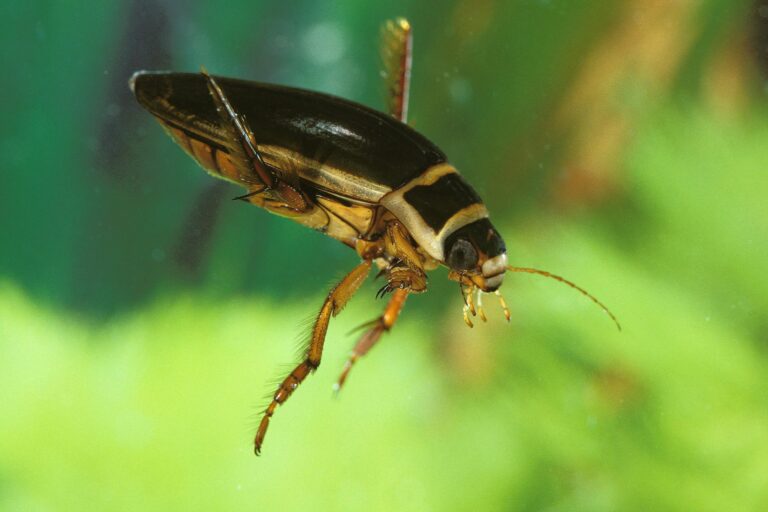Dytiscus marginalis

Dytiscus marginalis, commonly known as the great diving beetle, features a striking yellow margin around the pronotum and along the length of the elytra (Schaefer 2018). These beetles can reach a body length of up to 3 cm. The larvae possess spear-like mouthparts and live in water, while pupation occurs in the soil on land. The adult beetles have paddle-like hind legs, enabling them to swim swiftly and skillfully. They carry an air supply under their elytra to breathe underwater (Petrischak 2015).
Diet: Both adult beetles of the species Dytiscus marginalis and their larvae are predatory. They feed on other insects, tadpoles, small fish, as well as snails and worms (Petrischak 2015).
Conservation status: The great diving beetle is listed as “least concern” in the Red List of Threatened Species in Germany and currently does not have any special protection status.
-
Petrischak, H (2015)Erlebniswelt Gartenteich: von Ringelnattern, Gelbrandkäfern und Libellen. In: Biol. Unserer Zeit 45 (1), S. 59–61.
-
Schaefer, M (2018)Brohmer – Fauna von Deutschland. Ein Bestimmungsbuch unserer heimischen Tierwelt: Quelle & Meyer Verlag GmbH & Co